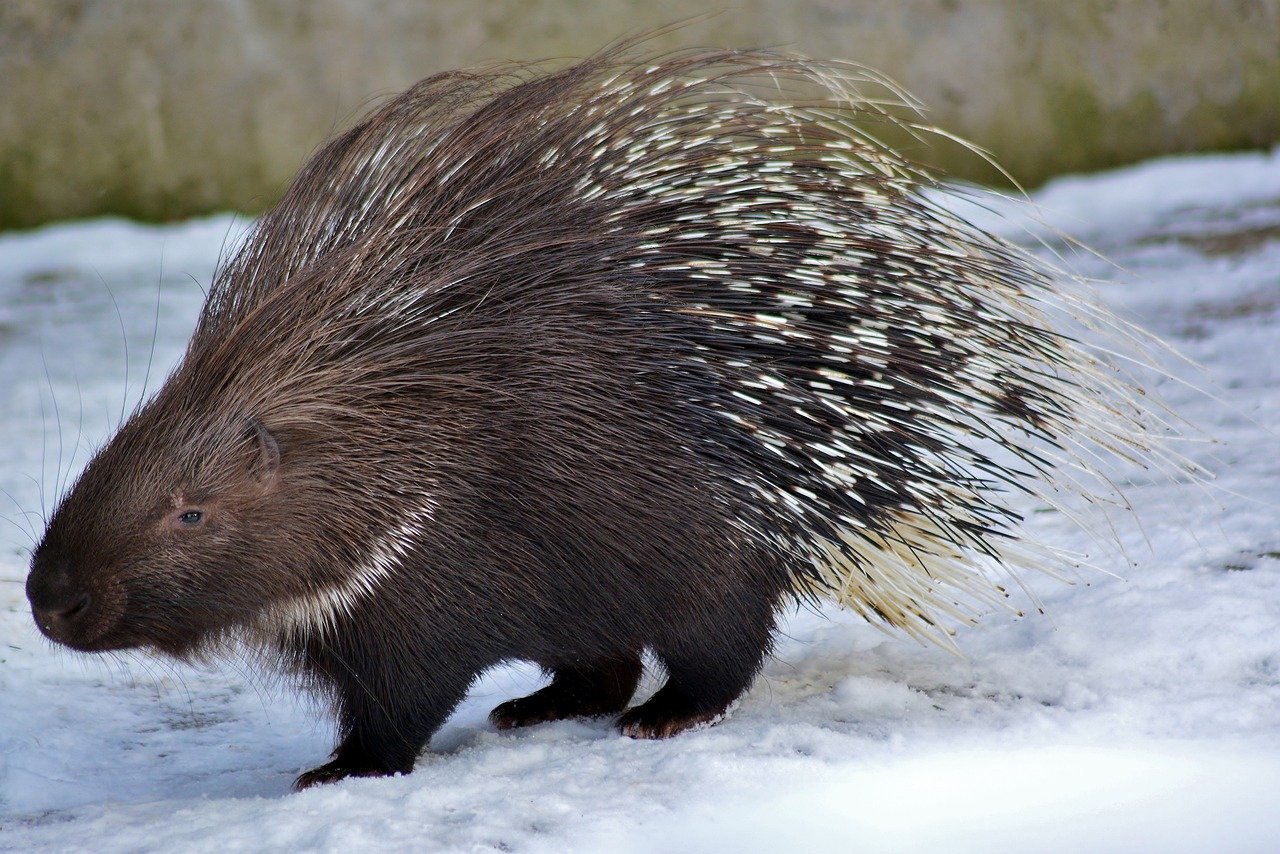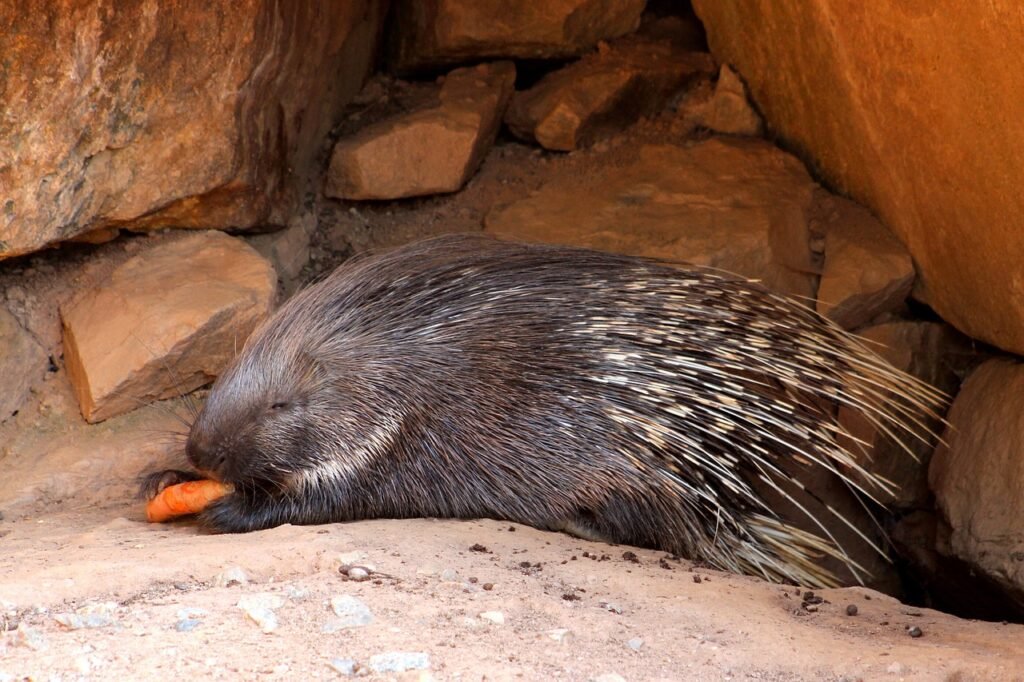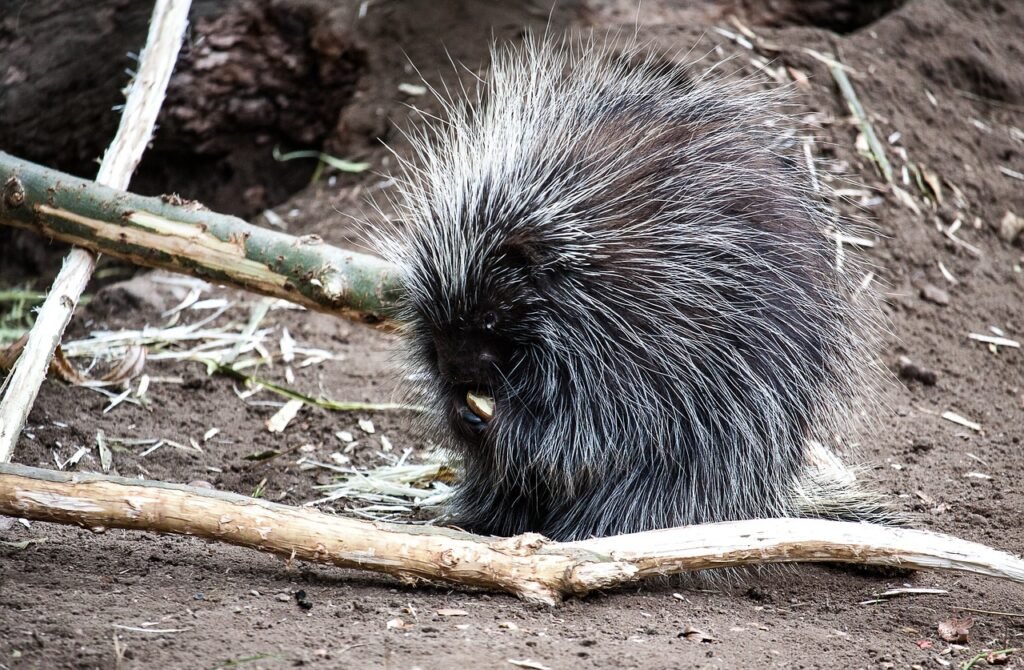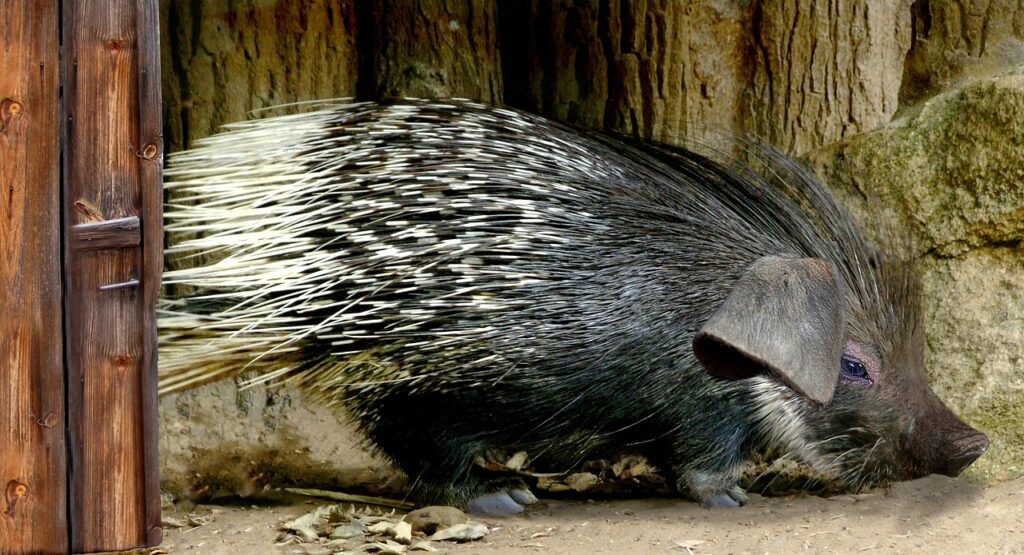Creating a comfortable and secure enclosure is crucial for the well-being of your porcupine. In this guide, we’ll explore the essentials of designing a porcupine enclosure to ensure a home that is not only safe but also enriching for your quilled companion.
1. Quill-Proof Materials:
Porcupines are equipped with sharp quills, so it’s essential to choose enclosure materials that are quill-proof. Opt for sturdy materials such as metal or thick wood to prevent your porcupine from escaping or injuring itself.
2. Adequate Space:
Porcupines need ample space to move around and exercise. Ensure that the enclosure is spacious enough to accommodate their natural behaviors, including climbing, exploring, and foraging.
3. Security and Predator Prevention:
Design the enclosure with security in mind. Check for potential escape routes and reinforce vulnerable areas. Protect your porcupine from potential predators by ensuring the enclosure is well-sealed.
4. Natural Terrain Elements:
Create a habitat that mimics the natural terrain of porcupines. Incorporate rocks, logs, and branches to encourage exploration and provide surfaces for climbing. This helps fulfill their instinctual need for varied environments.
5. Hiding Places and Shelters:
Porcupines appreciate having hiding spots where they can feel safe and secure. Integrate shelters or cozy hiding places within the enclosure to give your porcupine a sense of privacy.
6. Proper Ventilation:
Ensure good air circulation within the enclosure. Proper ventilation is crucial for maintaining a healthy environment and preventing issues like humidity buildup.
7. Climbing Structures:
Porcupines are natural climbers. Enhance their habitat with structures like platforms, shelves, or branches that allow them to engage in climbing activities, promoting both physical exercise and mental stimulation.
8. Easy Cleaning and Maintenance:
Design the enclosure with easy cleaning in mind. Regular maintenance is vital for your porcupine’s health, so create a setup that allows for efficient waste removal and general cleaning.
9. Feeding Area Designation:
Establish a specific area within the enclosure for feeding. This helps maintain cleanliness and ensures that your porcupine associates that space with mealtime. Consider incorporating feeding puzzles to make mealtime engaging.
10. Enrichment Opportunities:
Keep your porcupine mentally stimulated by incorporating enrichment activities. Toys, puzzle feeders, and items that encourage natural behaviors like foraging contribute to a happy and healthy porcupine.
Remember, each porcupine is unique, so observe your pet closely and adapt the enclosure based on their preferences and behaviors. By providing a well-designed and enriching environment, you’re creating a true “Home Sweet Quills” for your porcupine companion.



